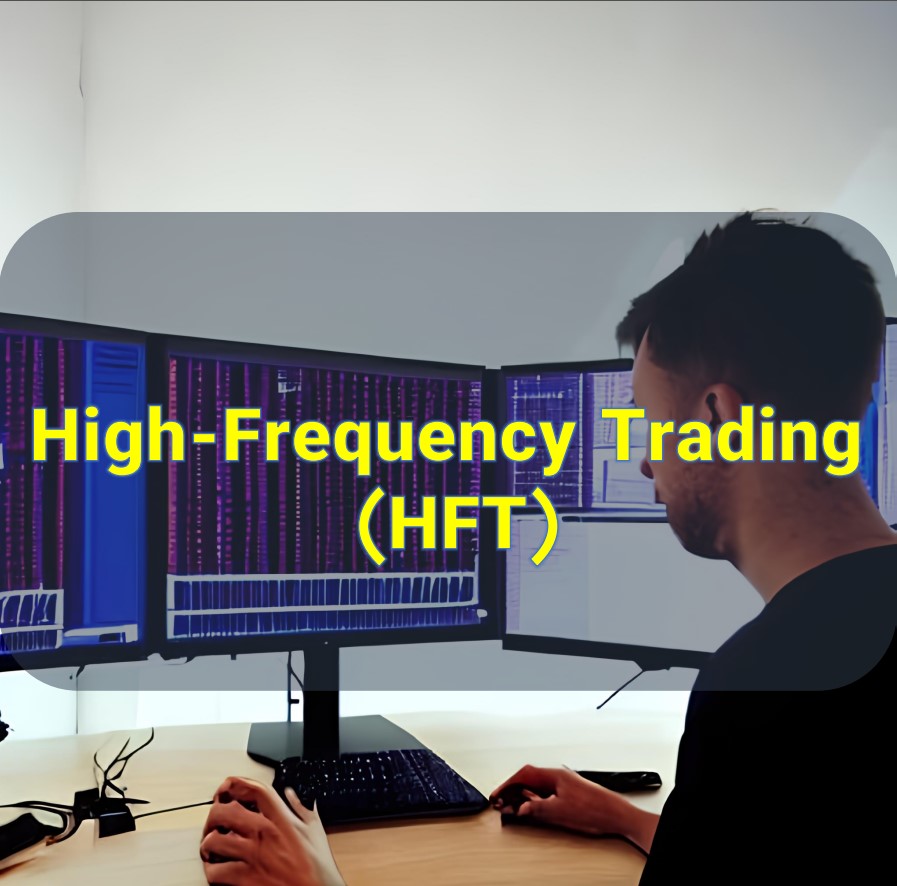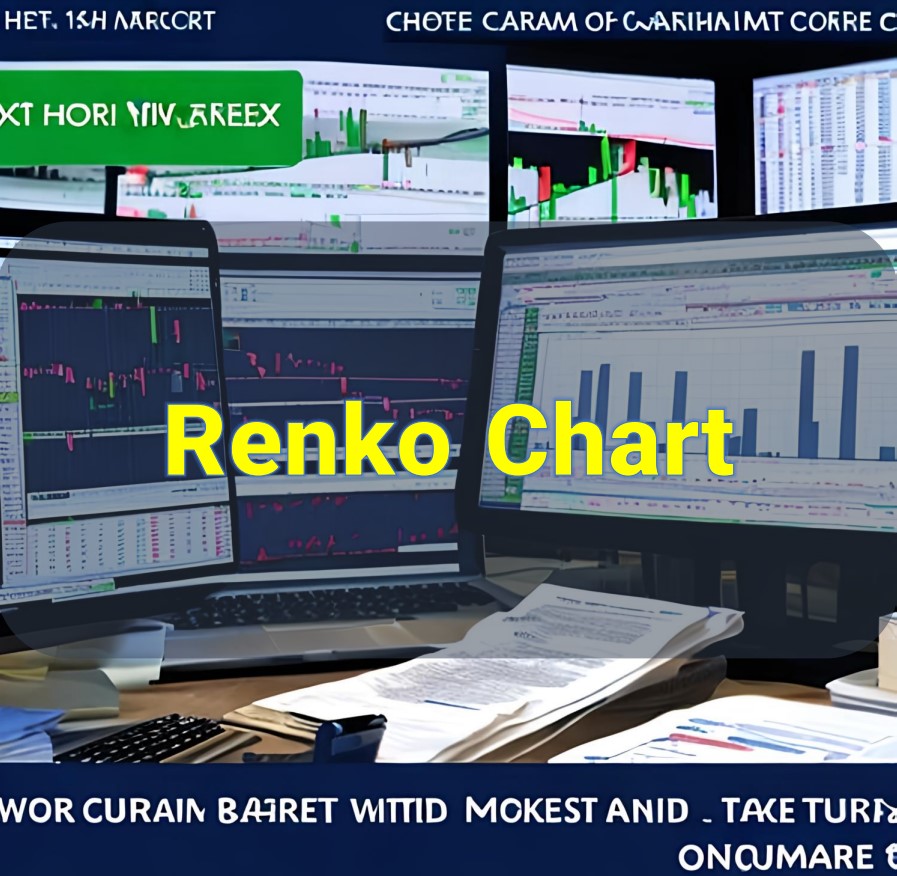High-Frequency Trading (HFT) – In today’s digital age, the financial markets have evolved significantly, with technological advancements revolutionizing the way trades are executed. One such innovation is high-frequency trading (HFT). This article delves into the concept of high-frequency trading, exploring its mechanisms, benefits, controversies, and impact on the global financial landscape.
What is High-Frequency Trading?
High-frequency trading (HFT) is a form of automated trading that leverages advanced algorithms and powerful computer systems to execute a large number of trades within fractions of a second. HFT relies on speed and efficiency to capitalize on small price discrepancies in the market, profiting from short-term price movements.
The Rise of High-Frequency Trading
The rise of high-frequency trading has transformed the financial landscape, revolutionizing the way trades are executed. This cutting-edge trading strategy has gained significant popularity and recognition in recent years, driven by advancements in technology and the availability of lightning-fast connectivity. High-frequency trading, or HFT, has emerged as a dominant force in the financial markets, attracting attention from traders, investors, and regulators alike.
HFT gained momentum with the advent of electronic exchanges and the widespread adoption of high-speed internet connections. These technological developments allowed market participants to process vast amounts of data in real-time and execute trades with unprecedented speed and efficiency. Gone are the days of manual trading and human decision-making; HFT relies on sophisticated algorithms and powerful computer systems to capitalize on fleeting market opportunities.
The mechanics of high-frequency trading are intricate yet fascinating. HFT firms utilize complex algorithms that analyze immense amounts of market data, including price movements, order books, and news feeds. These algorithms are designed to identify patterns, trends, and anomalies in the market, enabling HFT firms to make split-second trading decisions. Speed is of the essence in HFT, with trades executed in microseconds or even nanoseconds to take advantage of fleeting market imbalances.
The advantages of high-frequency trading are manifold. Firstly, HFT provides liquidity to the market, ensuring that there is a constant supply of buyers and sellers. This liquidity contributes to efficient price discovery and narrower bid-ask spreads, benefiting all market participants. HFT firms often invest substantial resources in cutting-edge technology, driving innovation in the financial sector and enhancing overall market efficiency.
However, the rise of high-frequency trading has not been without its challenges and controversies. One major concern surrounding HFT is the potential for market manipulation. Critics argue that HFT firms, with their lightning-fast trading capabilities, can exploit their speed advantage to gain an unfair edge over other market participants. Instances of flash crashes, where prices plummet or skyrocket within seconds, have raised concerns about the stability and integrity of the financial markets.
Regulating high-frequency trading presents a significant challenge for regulatory bodies around the world. Striking a balance between encouraging innovation and safeguarding market integrity is crucial. Some jurisdictions have implemented measures to mitigate the risks associated with HFT, including the introduction of speed bumps and minimum resting times for orders. These measures aim to level the playing field and address concerns about market manipulation and excessive volatility.
Looking ahead, the future of high-frequency trading appears promising. As technology continues to advance, HFT strategies are likely to become even more sophisticated. Artificial intelligence and machine learning algorithms are expected to play a more significant role in optimizing trading strategies and risk management. However, regulatory scrutiny and public perception may shape the future landscape of HFT, influencing its growth and adoption.
In conclusion, the rise of high-frequency trading has ushered in a new era of automated, lightning-fast trading in the financial markets. This trading strategy, driven by technological advancements, has brought both benefits and challenges. High-frequency trading provides liquidity, enhances market efficiency, and fosters innovation, but concerns about market manipulation and volatility persist. As regulators grapple with finding the right balance, the future of high-frequency trading will continue to evolve, shaping the financial landscape in years to come.
The Mechanics of High-Frequency Trading
High-frequency trading (HFT) operates on intricate mechanics that leverage advanced technology and algorithms to execute trades at lightning-fast speeds. Understanding the mechanics behind HFT sheds light on its effectiveness and impact in the financial markets.
At the core of high-frequency trading are sophisticated algorithms that process vast amounts of real-time market data. These algorithms analyze various factors, including price movements, order book information, news feeds, and even social media sentiment. By scrutinizing these data points, HFT algorithms aim to identify short-term market inefficiencies and capitalize on them.
To achieve the desired speed and efficiency, HFT firms often co-locate their servers near the exchanges’ data centers. This physical proximity minimizes latency, allowing for near-instantaneous communication between HFT systems and the trading platforms. In addition to server proximity, HFT firms invest heavily in high-speed internet connections and cutting-edge hardware to ensure optimal performance.
Once the algorithms identify a potential trading opportunity, HFT systems swiftly generate and submit orders to the exchange. These orders are typically executed in small increments, minimizing their market impact. HFT strategies often involve placing large numbers of orders, which are frequently canceled or modified as market conditions evolve. This technique, known as order book probing, allows HFT firms to gain insights into supply and demand dynamics.
HFT also relies on a range of sophisticated trading strategies. One common approach is market-making, where HFT firms continuously provide liquidity to the market by placing bids (buy orders) slightly below the current market price and asks (sell orders) slightly above it. This enables them to profit from the bid-ask spread while maintaining a balanced inventory of assets.
Another strategy employed by HFT is statistical arbitrage. This approach involves identifying temporary price discrepancies between related securities and quickly executing trades to exploit these inefficiencies. HFT algorithms constantly monitor correlations and deviations between securities to identify profitable arbitrage opportunities.
Risk management plays a crucial role in HFT operations. HFT firms implement robust risk controls to mitigate potential losses. These controls include predefined limits on position sizes, exposure levels, and the maximum number of trades executed within a given time frame. Additionally, sophisticated risk models are employed to assess potential market volatility and adjust trading strategies accordingly.
It is important to note that the success of HFT relies heavily on the quality and speed of data feeds. HFT firms invest in direct market data feeds, bypassing the delayed and consolidated market data available to the general public. This gives them a competitive advantage by providing real-time access to critical market information.
In conclusion, the mechanics of high-frequency trading involve sophisticated algorithms, high-speed infrastructure, and real-time data analysis. By leveraging these elements, HFT firms aim to identify short-term market inefficiencies and execute trades rapidly to capitalize on these opportunities. The speed, precision, and scale at which HFT operates have reshaped the dynamics of modern financial markets.
Advantages of High-Frequency Trading
High-frequency trading (HFT) offers several advantages that have contributed to its widespread adoption and success in the financial markets. These advantages encompass enhanced market liquidity, narrower bid-ask spreads, and technological advancements that promote overall market efficiency.
One of the primary advantages of HFT is its role in providing liquidity to the market. HFT firms actively participate in the buying and selling of securities, ensuring that there are readily available buyers and sellers at any given time. This liquidity is crucial for the smooth functioning of the markets, as it enables investors to execute trades quickly and efficiently without significantly impacting prices.
Furthermore, HFT has played a significant role in narrowing bid-ask spreads. The bid-ask spread represents the difference between the highest price a buyer is willing to pay and the lowest price a seller is willing to accept. By actively trading and constantly adjusting their bid and ask prices, HFT firms help reduce the spread, resulting in cost savings for market participants. Narrower spreads translate into lower transaction costs for investors, making it more attractive to engage in trading activities.
Another advantage of high-frequency trading lies in the substantial investments made by HFT firms in cutting-edge technology and infrastructure. These firms deploy powerful computer systems, high-speed internet connections, and advanced algorithms that can process and analyze vast amounts of data in real-time. This technological prowess drives innovation in the financial sector and contributes to the overall efficiency of the markets.
HFT has also led to advancements in market data availability and accessibility. HFT firms invest in direct market data feeds, enabling them to access real-time information directly from exchanges. This direct access provides them with a competitive edge over other market participants who rely on delayed or consolidated data feeds. The availability of high-quality, real-time data facilitates informed decision-making and enhances the accuracy of trading strategies.
Additionally, HFT can act as a stabilizing force in the markets, especially during times of increased volatility. The ability of HFT algorithms to quickly analyze and respond to market conditions can help mitigate extreme price movements. By providing liquidity and absorbing sudden surges in buying or selling pressure, H F T can contribute to a more orderly and stable market environment.
It is worth noting that the advantages of high-frequency trading are not without controversy. Critics argue that HFT can lead to increased market fragmentation, where liquidity is dispersed across multiple trading venues. They also raise concerns about potential market manipulation and the unequal playing field created by the speed advantage enjoyed by HFT firms. Regulators continue to monitor these issues and strive to strike a balance between the benefits and potential risks associated with HFT.
In conclusion, high-frequency trading offers several advantages that have transformed the financial markets. It provides liquidity, narrows bid-ask spreads, fosters technological innovation, and enhances market data availability. While these advantages have contributed to market efficiency, it is important to carefully consider the potential challenges and ensure appropriate regulation to maintain a fair and transparent trading environment.
Challenges and Controversies Surrounding High-Frequency Trading
High-frequency trading (HFT) has been accompanied by a range of challenges and controversies that have sparked debates among market participants, regulators, and the general public. These concerns revolve around market manipulation, increased market volatility, and the potential for an uneven playing field.
One of the primary challenges associated with HFT is the potential for market manipulation. Critics argue that HFT firms, due to their speed advantage and advanced algorithms, can exploit market conditions to their benefit and disadvantage other participants. They assert that HFT strategies, such as quote stuffing or spoofing, can create false market signals and distort the true supply and demand dynamics. Instances of flash crashes, where prices experience sudden and extreme fluctuations, have also raised concerns about the stability and integrity of the markets.
Another significant controversy surrounding HFT is the increased market volatility attributed to its activities. Critics argue that the high trading volumes and rapid-fire nature of HFT can amplify market swings, exacerbating volatility. The speed at which HFT algorithms execute trades can contribute to sudden price movements, creating an environment that is more susceptible to sharp price changes. This volatility can impact investor confidence and potentially hinder long-term investment strategies.
Furthermore, there are concerns about the unequal playing field created by HFT. Critics argue that HFT firms, with their significant investments in cutting-edge technology and direct market data feeds, have an unfair advantage over traditional market participants. The speed advantage enjoyed by HFT can result in market fragmentation, as these firms trade on multiple exchanges simultaneously, potentially leaving slower participants at a disadvantage. This disparity in speed and access to information raises questions about the fairness and transparency of the markets.
Regulatory bodies face the challenge of effectively regulating H F T to address these concerns. Striking the right balance between promoting innovation and ensuring market integrity is crucial. Regulatory measures implemented to mitigate the risks associated with H F T include the introduction of speed bumps, minimum resting times for orders, and enhanced market surveillance. These measures aim to level the playing field, reduce the potential for market manipulation, and promote a more stable trading environment.
It is important to note that not all market participants view HFT as detrimental. Proponents argue that HFT provides liquidity, tightens bid-ask spreads, and enhances market efficiency. They contend that the increased trading activity and rapid response to market conditions contribute to price discovery and narrowing spreads. Proponents also highlight the technological advancements driven by HFT that have led to improved trading infrastructure and accessibility to market data.
In conclusion, the challenges and controversies surrounding high-frequency trading highlight the need for careful consideration and regulation. Concerns about market manipulation, increased volatility, and an uneven playing field have led to ongoing debates. Striking the right balance between innovation, market integrity, and fair access to information is crucial for maintaining a transparent and efficient financial market environment.
The Impact of High-Frequency Trading on the Financial Markets
High-frequency trading (HFT) has had a significant impact on the financial markets, reshaping the dynamics of trading, market structure, and market participants’ strategies. The widespread adoption of HFT has brought both benefits and challenges, influencing various aspects of the global financial landscape.
One notable impact of high-frequency trading is its contribution to market liquidity. H-F-T firms actively participate in the buying and selling of securities, ensuring a constant flow of liquidity. Their rapid execution of trades and ability to provide liquidity in various financial instruments help facilitate smoother market operations. This liquidity benefits all market participants by enabling efficient price discovery and reducing the cost of executing trades.
Furthermore, HFT has played a role in narrowing bid-ask spreads. By frequently adjusting their bid and ask prices based on real-time market data, H-F-T firms increase competition among market makers, leading to tighter spreads. Narrower spreads translate to lower transaction costs for investors, making it more affordable and accessible to trade in the financial markets.
The prevalence of high-frequency trading has also contributed to changes in market structure. The introduction of electronic exchanges and advancements in trading technology have facilitated the growth of HFT. These changes have led to increased automation, faster order execution, and the rise of alternative trading venues. H-F-T has influenced the evolution of trading platforms and the development of new market structures to accommodate the needs of high-frequency traders.
However, the impact of HFT on the financial markets is not without its challenges. Critics argue that the speed advantage enjoyed by HFT firms can create a disparity in market access and contribute to market fragmentation. Slower market participants may face difficulties competing with high-frequency traders, leading to concerns about fairness and transparency. Regulators strive to address these challenges by implementing measures to level the playing field and ensure market integrity.
Moreover, the rise of HFT has also raised concerns about market stability. Critics contend that the high trading volumes and rapid-fire nature of HFT can amplify market volatility. The speed at which H-F-T algorithms execute trades can exacerbate price swings, potentially leading to increased market turbulence. Instances of flash crashes, where prices experience sudden and extreme fluctuations, have been linked to high-frequency trading activities.
HFT’s impact on the financial markets has also prompted regulatory scrutiny. Regulatory bodies worldwide monitor H F T activities to ensure compliance with regulations and safeguard market integrity. Measures such as circuit breakers, minimum resting times, and enhanced market surveillance aim to mitigate the risks associated with H F T and maintain a stable trading environment.
In conclusion, high-frequency trading has had a profound impact on the financial markets. It has enhanced market liquidity, narrowed bid-ask spreads, and influenced market structure. However, challenges and concerns related to market access, fragmentation, and volatility persist. Striking a balance between innovation, market integrity, and fair access to information is crucial for ensuring a transparent and efficient financial market environment.
Regulating High-Frequency Trading
Regulating high-frequency trading poses a significant challenge for regulatory bodies worldwide. Striking a balance between encouraging innovation and ensuring market integrity is crucial. Some jurisdictions have introduced measures such as speed bumps and minimum resting times to mitigate the risks associated with HFT.
The Future of High-Frequency Trading
As technology continues to advance, the future of high-frequency trading remains promising. Artificial intelligence and machine learning are likely to play an increasingly important role in optimizing trading strategies and risk management. However, regulatory scrutiny and public perception may shape the future landscape of H F T.
Conclusion
High-frequency trading has revolutionized the financial markets, leveraging technology to execute trades at lightning-fast speeds. While it offers benefits such as increased liquidity and market efficiency, it also presents challenges and controversies. Regulators and market participants must navigate this complex landscape to strike a balance between innovation and market integrity.
FAQs
1. How fast are high-frequency trades executed?
High-frequency trades are executed within fractions of a second, often in microseconds or even nanoseconds.
2. Do high-frequency traders always make a profit?
While high-frequency traders aim to capitalize on market inefficiencies, they are not guaranteed to make a profit. Profitability depends on numerous factors, including market conditions and the effectiveness of trading strategies.
3. Are individual investors at a disadvantage due to high-frequency trading?
Individual investors may face challenges when competing with high-frequency traders due to their speed advantage. However, advancements in technology have also provided retail investors with tools and platforms to navigate the markets more effectively.
4. What is the role of algorithms in high-frequency trading?
Algorithms play a crucial role in high-frequency trading, as they analyze vast amounts of data and make trading decisions in milliseconds. These algorithms are designed to identify patterns, execute trades, and manage risk.
5. How is high-frequency trading regulated?
Regulating high-frequency trading is a complex task. Various jurisdictions have implemented measures to mitigate risks associated with HFT, including speed bumps, circuit breakers, and enhanced market surveillance.







